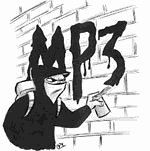IT’S PROBABLY THE WORST idea that a couple of writers can have: “Hey, let’s start a magazine!” The reasons are manifold, from the obvious financial woes that plague publishing startups to the subtle psychological factors, like that little voice that threatens to drive the would-be Jann Wenner or Tina Brown to insanity by repeating foreboding statistics such as “95 percent of new magazines fail in their first three years.”
No Depression Fourth Anniversary, featuring Buddy Miller, Lori Carson, and surprise guests.
Tractor Tavern, September 5-7
The only defense against failure is a brilliant concept, like the one that struck longtime Seattle scribes Grant Alden and Peter Blackstock four years ago when they started their magazine No Depression.
The two had lived through and written about the rise and fall of grunge and were privy to the music biz scuttlebutt about what trend would constitute the Next Big Thing. The candidates were electronic dance music, recast as the sound bite-friendly “electronica,” and an updated form of traditional country music, which its growing number of adherents were calling anything from “Americana” to “alternative country.”
In 1995, a parade of new electronica magazines began hitting the stands, but Alden and Blackstock took the road less traveled. They’d been listening to this new wave of country-influenced bands and following the movement in a bustling online chat room called No Depression—named for an Uncle Tupelo album but also alluding to an old Carter Family song—and the two felt they’d identified a vital niche.
“When we started off, we had modest expectations,” Blackstock recalls. “But I think Grant and I sensed that there was a place for a magazine like this.”
They sensed right. Music fans snatched up the 2,000 copies of the first issue of No Depression immediately after its September 1995 debut. The magazine quickly garnered positive press, getting written up in Rolling Stone. Right off the bat, Alden and Blackstock’s baby became the place to turn for concert and CD reviews, and feature stories, on any artist in the loosely defined genre of alt-country—”whatever that is,” as No Depression‘s tagline puts it.
BESIDES THE USUAL monetary and logistical details, Alden and Blackstock needed to map out the parameters of the magazine’s coverage. In its nascent stages, the alt-country movement built from a foundation started by rock’s countrified outlaw Gram Parsons and traced its influences back to traditional artists such as Hank Williams, left-of-center types such as Merle Haggard or Willie Nelson, and also to punk, blues, and folk acts. After the magazine’s successful first issue, the publishers faced the challenge of appealing to more readers without alienating the ones they’d already reached.
Rather than branch out to dabble in other genres, No Depression maintained a sort of “You’ll know it when you hear it” kind of approach to deciding what was and wasn’t alt-country.
“One of the things I like to say when people ask me how to define alt-country is that we define it by not defining it,” Blackstock says. This mantra has allowed them to include artists as far afield stylistically as rockabilly’s Jason and the Scorchers, old-time country’s the Louvin Brothers, and modern favorites like Wilco and Whiskeytown.
The open-minded attitude has made No Depression attractive to readers and also to writers. Despite the modest budget, nationally known critics with a soft-spot for alt-country gladly contribute to the magazine for a fraction of what they earn at their bread-and-butter publications; the masthead includes writers whose work appears regularly in Rolling Stone, the Washington Post, and the New York Times. (Disclosure: I’ve even penned a couple of CD reviews for No Depression.)
“If you want to write about this music in any detail, this is one of the few places where you can do that,” says Alden from his home in Nashville. Alden, remembered in Seattle as The Rocket‘s longtime editor and as founder of the defunct art gallery Vox Populi, oversees No Depression‘s art direction and co-editorial duties from the country music capital; a third member of the team, Kyla Fairchild, serves as advertising and distribution director from her Seattle office.
Alden goes on to suggest that the same element that draws writers to No Depression‘s pages keeps the readers coming as well. “I realize that in Publishing 101 they tell you not to run long stories,” he says, “but some people still like to read.”
The number of people who like to read his magazine continues to grow, as does the page count of each bimonthly issue; the fourth-anniversary edition on stands now has a circulation of 15,000, with 132 pages of articles and advertising. It’s also grown into something of a cottage industry for Alden and Blackstock, who last year oversaw the release of a No Depression book from Dowling Press that compiled a few dozen features from the magazine’s first three years. More recently, the duo contributed liner notes and teamed on the promotion of CD compilations released by Starbucks (Mile Marker 383, featuring Lucinda Williams, Whiskeytown, and Old 97’s) and K-Tel (the double-disc set Exposed Roots—The Best of Alt-Country).
Both Alden and Blackstock continue to freelance as writers, and they’re quick to point out that as publishers they earn only a living wage, but they’ve certainly defied the odds in getting a new issue of No Depression on the shelves every two months for the past four years.
“We tapped into something that’s been around for a long time,” Alden says of their loosely defined genre. “I’m not sure that I ever had a doubt that this wouldn’t work.”






